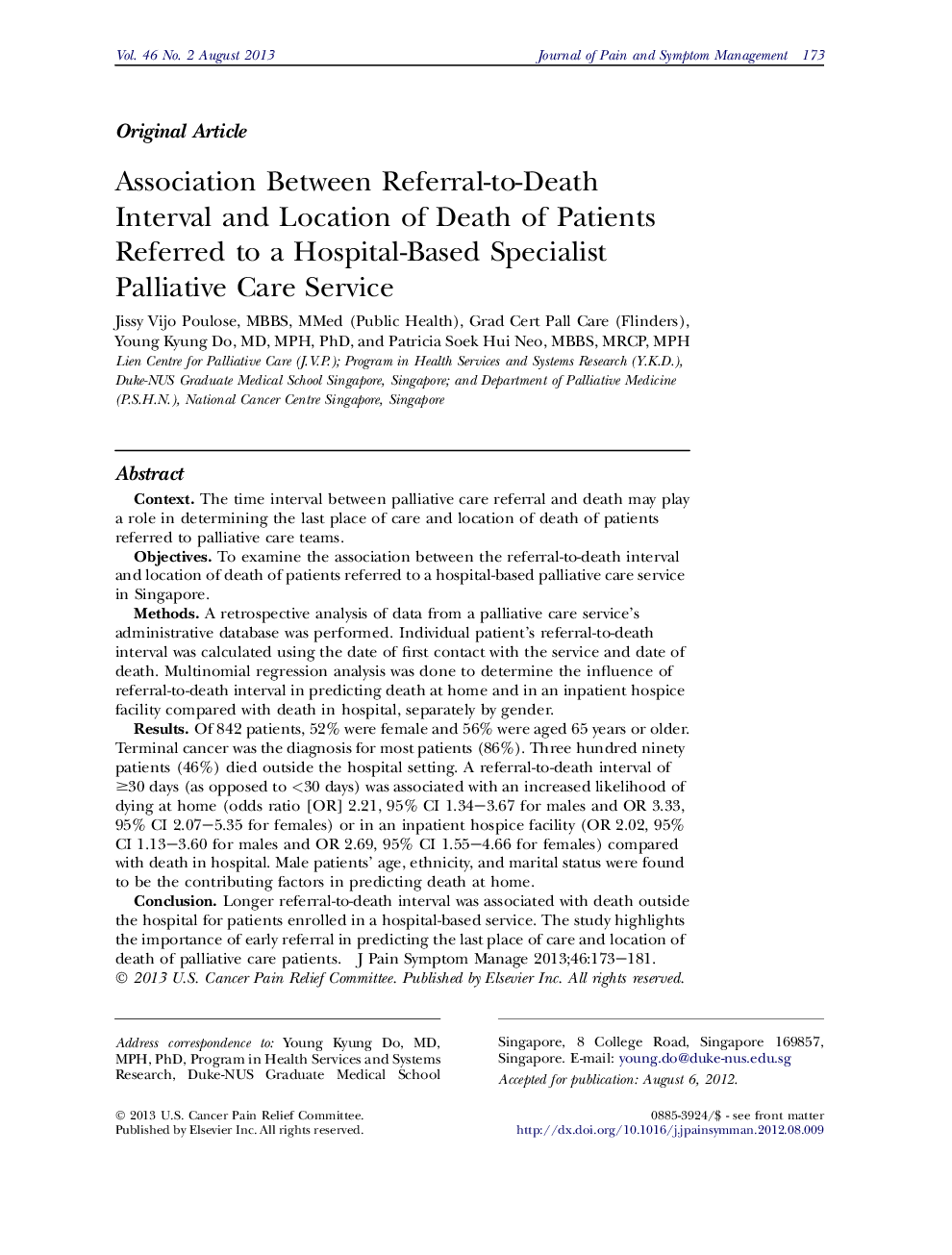| Article ID | Journal | Published Year | Pages | File Type |
|---|---|---|---|---|
| 2729964 | Journal of Pain and Symptom Management | 2013 | 9 Pages |
ContextThe time interval between palliative care referral and death may play a role in determining the last place of care and location of death of patients referred to palliative care teams.ObjectivesTo examine the association between the referral-to-death interval and location of death of patients referred to a hospital-based palliative care service in Singapore.MethodsA retrospective analysis of data from a palliative care service's administrative database was performed. Individual patient's referral-to-death interval was calculated using the date of first contact with the service and date of death. Multinomial regression analysis was done to determine the influence of referral-to-death interval in predicting death at home and in an inpatient hospice facility compared with death in hospital, separately by gender.ResultsOf 842 patients, 52% were female and 56% were aged 65 years or older. Terminal cancer was the diagnosis for most patients (86%). Three hundred ninety patients (46%) died outside the hospital setting. A referral-to-death interval of ≥30 days (as opposed to <30 days) was associated with an increased likelihood of dying at home (odds ratio [OR] 2.21, 95% CI 1.34–3.67 for males and OR 3.33, 95% CI 2.07–5.35 for females) or in an inpatient hospice facility (OR 2.02, 95% CI 1.13–3.60 for males and OR 2.69, 95% CI 1.55–4.66 for females) compared with death in hospital. Male patients' age, ethnicity, and marital status were found to be the contributing factors in predicting death at home.ConclusionLonger referral-to-death interval was associated with death outside the hospital for patients enrolled in a hospital-based service. The study highlights the importance of early referral in predicting the last place of care and location of death of palliative care patients.
